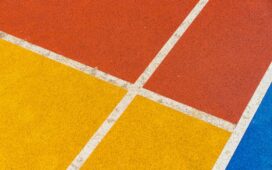There is a lot of damage that a flood can do to your property. Many of your valuables can be lost or ruined and you will have to get rid of most of the food in the house. And floodwater can seep into the walls and structure of the home weakening its integrity. Mould is a significant problem when it comes to flooded homes and this is the main reason that sometimes you are not able to salvage your carpets.
Porous materials like carpets
Will soak up water very quickly and they can warp or get discoloured very quickly. The damage will increase when the extent of water absorbed increases. And the porosity of carpets will make it easier for moisture to spread to a larger area quickly. If your carpet has been under sitting water for a while, you will need to contact a company for carpet water damage restoration Melbourne. They will be able to visit your home and examine the carpets to see if they can be salvaged. And if restoration is possible, they will work quickly to remove water from the carpet and dry it. Carpets, upholstery and rugs are some of the things that will get affected by the floodwater first so you need to make sure immediate action is taken to salvage them. When you act quickly, there is a higher chance of limiting the damage.

There are also times when flooded carpets can’t be saved.
If the water is contaminated, the carpet will absorb the contaminants in the water. This can lead to further damage. Also, when floodwater comes from outside, you will not be able to tell what is mixed in it. There can be sewage, heavy metals, pesticides and other toxic chemicals and you may not be able to remove these contaminants 100% from the carpet. For the health and safety of your family, it is best to get rid of the carpets on this occasion. But if you are sure that the flood is from clean water, you will have a better chance of saving the carpets. Drying the carpet is of utmost importance. This will be made quicker if you are able to remove the wet carpet. If this is not possible, you can use equipment such as electric fans, wet and dry vacuums, dehumidifiers and air conditioning to dry it out. Once the carpet is dry, it should be cleaned by vacuuming and shampooing.

There will be areas
That are hard to reach using the wet and dry vacuum. For these areas, you can use dry towels to soak up the water. Cross ventilation is very important to make sure that the wet air surrounding the carpet is constantly replaced with dry air. So open the windows and doors to bring fresh air inside. You can also increase ventilation rate by turning on electrical fans. You may notice that the carpet smells musty and this odour can remain even after the carpet is clean. You can use baking soda to absorb some of the odours and vacuum it. A professional cleaning service will be more helpful as they will know which substances can be used safely with the material of your carpet. Otherwise, certain chemicals can further damage the carpet fibres.









